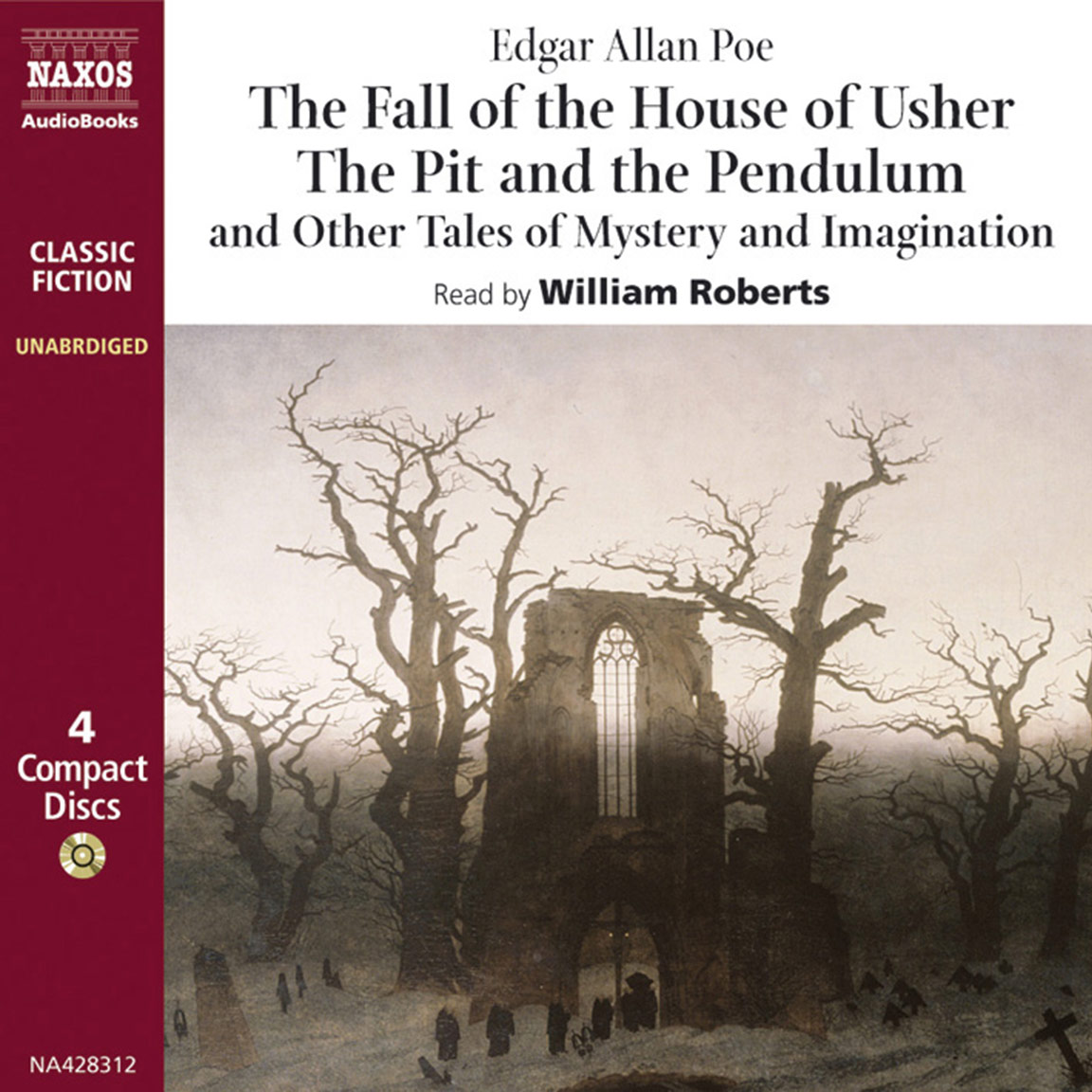Table Of Content

As Roderick talks about his sister’s illness, the narrator sees her pass through a distant part of the house. Fearing that her body will be exhumed for medical study, Roderick insists that she be entombed for two weeks in the family tomb located in the house before being permanently buried. The narrator helps Roderick put Madeline's body in the tomb, whereupon the narrator realizes that Madeline and Roderick are twins. The narrator also notes that Madeline's body has rosy cheeks, which sometimes happens after death. Over the next week, both Roderick and the narrator find themselves increasingly agitated. I know not how it was — but, with the first glimpse of the building, a sense of insufferable gloom pervaded my spirit.
Every Death in the Fall of the House of Usher Explained - Netflix Tudum

The song Roderick sings, “The Haunted Palace,” is an extended metaphor that compares the mind of a mad person to a haunted house or a palace under siege. This metaphor is representative of Roderick’s own mental deterioration. In the first stanza of the song, Roderick names the monarch Thought (“In the monarch Thought’s dominion”), suggesting that reason rules over this mind. The physical elements of the palace additionally map onto the features of a human face.
The Fall of the House of Usher (miniseries)
This friend is riding to the house, having been summoned by Roderick Usher, having complained in his letter that he is suffering from some illness and expressing a hope that seeing his old friend will lift his spirits. Contemporary readers and critics interpreted the story as a somewhat sensationalized account of Poe’s supposed madness. (As a recluse, Poe often invited such accusations.) Later scholarship pursued alternative interpretations. Some scholars speculated that Poe may have attached special importance to the fact that Roderick and Madeline are twins, noting that Poe previously investigated the phenomenon of the double in “Morella” (1835) and “William Wilson” (1839). Other scholars pointed to the work as an embodiment of Poe’s doctrine of l’art pour l’art (“art for art’s sake”), which held that art needs no moral, political, or didactic justification.

Film Credits
The Usher family has become so identified with its estate that the peasantry confuses the inhabitants with their home. In “The Fall of the House of Usher,” the setting, diction, and imagery combine to create an overall atmosphere of gloom. The story opens on a “dull, dark, and soundless day” in a “singularly dreary tract of country.” As the narrator notes, it is autumn, the time of year when life begins to give way to old age and death. A mere glimpse of the Usher mansion inspires in the narrator “an iciness, a sinking, a sickening of the heart.” Upon entering the house, the reader as the narrator navigates through a series of dark passages lined with carvings, tapestries, and armorial trophies. Poe draws heavily on Gothic conventions, using omens and portents, heavy storms, hidden passageways, and shadows to set the reader on edge. Within a few hours of the narrator’s arrival, Roderick begins to share some of his theories about his family.
Usher has been reimagined as the head of a massive pharmaceutical company he runs with his twin sister, Madeline (Mary McDonnell). Every episode includes flashbacks to a young Roderick (Zach Gilford), Madeline (Willa Fitzgerald), and Annabel Lee (Katie Parker), Roderick’s first wife. These fill in how the Ushers made their fortune, but they’re kind of a narrative drag. It’s important that Roderick and Madeline are cruel, selfish creatures—less so how they got that way.
A Summary and Analysis of Edgar Allan Poe’s ‘The Fall of the House of Usher’
The secret that is buried and then comes to light (represented by Madeline) is never revealed. The symbol which represents the secret – Madeline herself – is hidden away by Roderick, but that symbol returns, coming to light at the end of the story and (in good Gothic fashion) destroying the family for good. In a shocking development, Madeline breaks out of her coffin and enters the room, and Roderick confesses that he buried her alive.
Your password reset email should arrive shortly.
House of Usher is a 1960 American International Pictures horror movie. It stars Vincent Price, Myrna Fahey, Mark Damon, and Harry Ellerbee. It is based on the short story The Fall of the House of Usher by Edgar Allan Poe. Roderick and Madeline sold their souls the night they killed Fortunato CEO Rufus Griswold (Michael Trucco) — the same night they met Verna, on New Year’s Eve 1979. Using Griswold as a fall guy to begin Roderick’s takeover, the twins drugged him on the night of the company holiday party. When Griswold woke, he found that they’re sealing him behind a brick wall in the basement of the new Fortunato building he’s constructing.
The narrator is mysteriously trapped by the lure of Roderick’s attraction, and he cannot escape until the house of Usher collapses completely. Characters cannot move and act freely in the house because of its structure, so it assumes a monstrous character of its own—the Gothic mastermind that controls the fate of its inhabitants. Poe, creates confusion between the living things and inanimate objects by doubling the physical house of Usher with the genetic family line of the Usher family, which he refers to as the house of Usher. Poe employs the word “house” metaphorically, but he also describes a real house.
Who Is the Informant in The Fall of the House of Usher? - Esquire
Who Is the Informant in The Fall of the House of Usher?.
Posted: Thu, 19 Oct 2023 07:00:00 GMT [source]
However, the connection between the house and the family runs deeper than linguistic shorthand. The decrepit house acts as a physical manifestation of the Usher family. The narrator observes the house as having an almost human-like quality, describing its windows as “eye-like.” Just as Roderick appears to radiate his own melancholy, so too does the house have a depressing air. Furthermore, the house, despite holding together as a totality, shows signs of physical decay, like crumbling stones, dead trees, and mushrooms growing from the masonry.
Roderick tells the narrator that he suffers from nerves and fear and that his senses are heightened. The narrator also notes that Roderick seems afraid of his own house. Roderick’s sister, Madeline, has taken ill with a mysterious sickness—perhaps catalepsy, the loss of control of one’s limbs—that the doctors cannot reverse.
A storm begins, and Roderick comes to the narrator's bedroom (which is situated directly above the house's vault) in an almost hysterical state. Throwing the windows open to the storm, Roderick points out that the lake surrounding the house seems to glow in the dark, just as Roderick depicted in his paintings, but there is no lightning or other explainable source of the glow. The narrator is impressed with Roderick's paintings and attempts to cheer him by reading with him and listening to his improvised musical compositions on the guitar. Roderick sings "The Haunted Palace", then tells the narrator that he believes the house he lives in to be alive, and that this sentience arises from the arrangement of the masonry and vegetation surrounding it. Further, Roderick believes that his fate is connected to the family mansion.
The first two episodes of The Fall of the House of Usher premiered at Fantastic Fest in September 2023 before the Netflix release the following month, being viewed more than 13 million times in its first two weeks. It was met with positive reviews, with critics praising its production values, directing, and performances (in particular from Gugino, Greenwood and Mark Hamill), although they were divided on its narrative, notably in relation to the source materials. A television adaptation was produced by ATV for the ITV network in 1966 for the horror anthology series Mystery and Imagination. In the Roger Corman film from 1960, released in the United States as House of Usher, Vincent Price starred as Roderick Usher, Myrna Fahey as Madeline and Mark Damon as Philip Winthrop, Madeline's fiancé. The film was Corman's first in a series of eight films inspired by the works of Edgar Allan Poe. La Chute de la maison Usher is a 1928 silent French horror film directed by Jean Epstein starring Marguerite Gance, Jean Debucourt, and Charles Lamy.
However, Flanagan is smart enough to shift the Poe narratives ever so slightly for a modern audience. His version of The Tell-Tale Heart is a modern gem, and “The Gold-Bug” is reimagined as a new brand for the Usher company. But the themes remain the same—guilt, obsession, vengeance, and a supernatural sense of justice.
Roderick Usher is a gifted poet and artist, whose talents the narrator praises before sharing a poem Usher wrote, titled ‘The Haunted Palace’. The ballad concerns a royal palace which was once filled with joy and song, until ‘evil things’ attacked the king’s palace and made it a desolate shadow of what it once was. This is an abridged summary and analysis of "The Fall of the House of Usher." For the complete study guide (including quotes, literary devices, analysis of the major characters, and more), click here. The Fall of the House of Usher, supernatural horror story by Edgar Allan Poe, published in Burton’s Gentleman’s Magazine in 1839 and issued in Poe’s Tales of the Grotesque and Arabesque (1840).
It was, however, the only book immediately at hand; and I indulged a vague hope that the excitement which now agitated the hypochondriac, might find relief (for the history of mental disorder is full of similar anomalies) even in the extremeness of the folly which I should read. Could I have judged, indeed, by the wild overstrained air of vivacity with which he harkened, or apparently harkened, to the words of the tale, I might well have congratulated myself upon the success of my design. It was, especially, upon retiring to bed late in the night of the seventh or eighth day after the placing of the lady Madeline within the donjon, that I experienced the full power of such feelings. Sleep came not near my couch — while the hours waned and waned away. I struggled to reason off the nervousness which had dominion over me.
The narrator tells him that such gas is natural; there is nothing uncommon in it. The narrator has visited the house because Roderick Usher has sent him a letter that sincerely asks him to give him company. In the letter, Roderick has mentioned that he has been physically and emotionally ill due to which the narrator has rushed to help his friend. The characteristic element of Poe’s work is the presence of capacious and disintegrating houses; such houses in the stories symbolize the destruction of the human soul and the human body. An interpretation which has more potential, then, is the idea that the ‘house of Usher’ is a symbol of the mind, and it is this analysis which has probably found the most favour with critics.


No comments:
Post a Comment